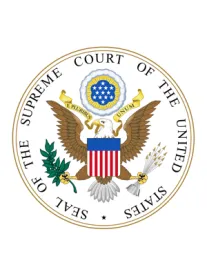After eleven years of litigation, two jury trials, and multiple appeals, on April 5, 2021, Google LLC prevailed in its defense of Oracle America, Inc.’s copyright infringement claims over Google’s use of Java API declaring code in early versions of the Android smartphone platform. In a 6-2 decision (Justice Barrett did not take part in the consideration or decision of the case), the U.S. Supreme Court reversed the Federal Circuit’s ruling, sidestepping the question of whether Oracle’s Java API was copyrightable, and finding that, even assuming that it was, Google’s use of certain portions of that API constituted fair use under 17 U.S.C. § 107.
The Majority Opinion
The majority opinion, penned by Justice Breyer, examined the four statutory fair use factors, but began with the rarely definitive second fair use factor—the nature of the work. In doing so, the Court distinguished between implementing code and declaring code, holding that declaring code “embodies a different kind of creativity” than implementing code and “differs to some degree from the mine run of computer programs.” In drawing this distinction, the Court found that declaring code is different in several ways:
[U]nlike many other programs, [declaring code’s] use is inherently bound together with uncopyrightable ideas (general task division and organization) and new creative expression (Android’s implementing code). Unlike many other programs, its value in significant part derives from the value that those who do not hold copyrights, namely, computer programmers, invest of their own time and effort to learn the API’s system. And unlike many other programs, its value lies in its efforts to encourage programmers to learn and to use that system so that they will use (and continue to use) Sun-related implementing programs that Google did not copy.
In relying on this distinction between declaring code and implementing code, the Court concluded that Oracle’s copyright in the copied Java API declaring code was weak and entitled to only narrow copyright protection. Accordingly, the Court found the second fair use factor favored Google.
Turning to the first fair use factor—the purpose and character of the use—the Court focused on evidence heard by the jury regarding industry norms and reimplementation of APIs as a common practice among programmers. The Court found Google “copied the API… only insofar as needed to include tasks that would be useful in smartphone programs” and did so in a manner that “seeks to create new products” by “offer[ing] programmers a highly creative and innovative tool.” The Court found this use transformative because it is “consistent with that creative ‘progress’ that is the basic constitutional objective of copyright itself.” The Court discounted the importance of the commerciality of Google’s use and good faith inquiry, finding that those aspects of the first-factor analysis were not dispositive under the specific facts presented in this case.
For the third factor—the amount and substantiality of the copying—the Court viewed Google’s copying of approximately 11,500 lines of Oracle’s Java API small in the context of the total Java API, which consists of 2.86 million lines of code. The Court rejected Oracle’s reliance on the argument that Google took the “heart” of the Java API, reasoning that Google “copied those lines not because of their creativity, their beauty or even (in a sense) because of their purpose” but because such transformative use “permit[s] programmers to make use of their knowledge and experience” with Java. Accordingly, the Court found the third factor also favored Google.
With regard to the fourth factor—the market impact of the use—the Court seemed to concede that Oracle lost revenue but noted that “a potential loss of revenue is not the whole story.” The Court noted that “Google’s Android platform was part of a distinct (and more advanced) market than Java software” and found that Java-licensed devices without touchscreens or QWERTY keyboards showed Google’s use of Java for Android did not substitute Oracle’s market because Android was “a new form of smartphone technology that Sun was never able to offer.” The Court also found it necessary to “take into account the public benefits the copying will likely produce” and, in doing so, held that “the reimplementation of a user interface allows creative new computer code to more easily enter the market.” The Court concluded the fourth factor also favored Google.
The Dissenting Opinion
Justice Thomas’ dissenting opinion, joined by Justice Alito, took issue with the majority’s distinction between declaring code and implementing code, which the dissent characterized as an “opening mistake” that “taints the Court’s entire analysis.” Rather than sidestep the question, the dissent would have addressed the issue of copyrightability before considering fair use.
The dissent also argued that the fair-use finding was at odds with the Court’s fair-use precedent and Congress’s directives on the protectability of computer code, which made no distinction between declaring code and implementing code. The dissent also rejected the idea that Google’s use was transformative because it facilitates the creation of new products, asserting that such definition “eviscerates copyright” and asserted that the proper “denominator” for considering the amount of the use was the declaring code itself. Perhaps most notably, the dissent found Oracle’s market was severely harmed:
By copying Oracle’s work, Google decimated Oracle’s market and created a mobile operating system now in over 2.5 billion actively used devices, earning tens of billions of dollars every year. If these effects on Oracle’s potential market favor Google, something is very wrong with our fair-use analysis.
Conclusions
The Court’s decision relied heavily on the facts and evidence of record and limited its holding to “declaring code” of the Java API rather than to APIs in general. While the opinion avoids broad pronouncements on the copyrightability of APIs (which several amicus briefs cautioned would disrupt the software and tech industries), the Court’s distinction between implementing code and declaring code may have lasting impact.
Specifically, the Court’s decision to accord declaring code only weak or “thin” protection because it “is inherently bound together with uncopyrightable ideas” could have far reaching repercussions. As the dissent argues, courts may extend this reasoning to other kinds of software that are also allegedly “inherently bound together with uncopyrightable ideas” to the extent that, as the majority posits, software is “functional in nature.”
Moreover, discounting the success of the copied work when considering the fourth factor and relying on the perceived shortcomings of the copyright owner’s efforts to exploit its work might open a Pandora’s box of fair-use arguments.
Lower courts will likely find much in this opinion to address, especially where, as here, fair use “primarily involves legal work.”
The case is Google LLC v. Oracle Am., Inc., No. 18-956, 2021 U.S. LEXIS 1864; 2021 WL 1240906 (Apr. 5, 2021).



 />i
/>i
